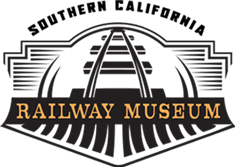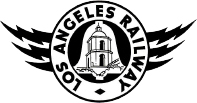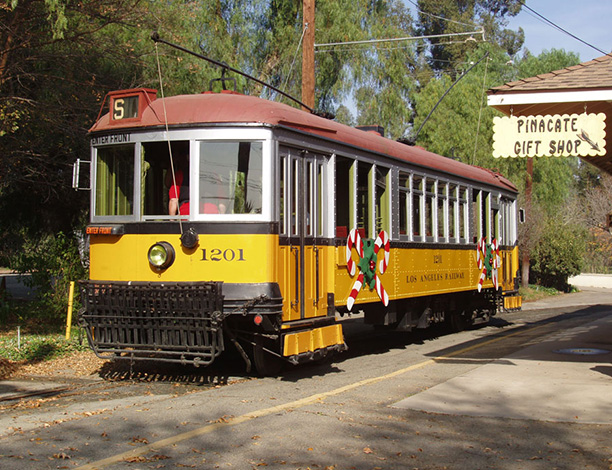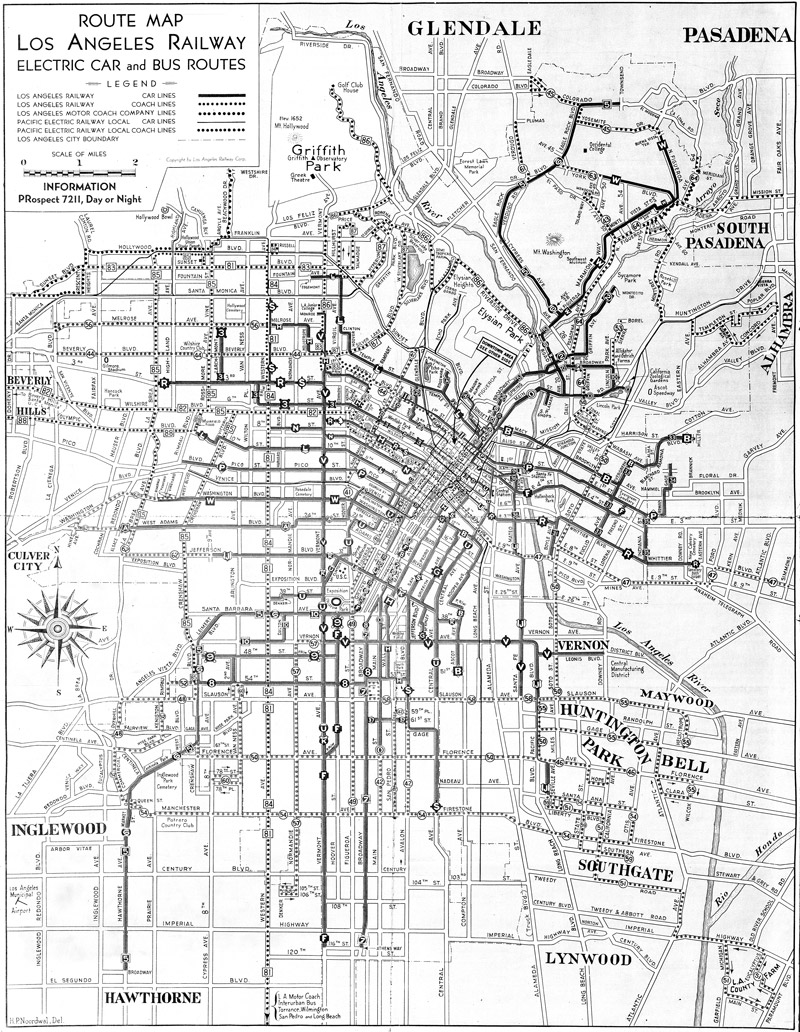A Brief History of the Los Angeles Railway
An investor group led by Henry E. Huntington bought control of the Los Angeles Railway in 1898. Forced off the Southern Pacific board by E. H. Harriman in 1900, he moved permanently to Southern California and became actively engaged in the operation.
The Los Angeles Railway, best known for its Yellow Cars, ran on 3 ½ foot gauge track, common to street railways. This reduced costs, and incidentally, kept freight cars off city streets. It ended up sharing dual gauge trackage with the Pacific Electric along Hawthorne Boulevard, on Main Street, and on Fourth Street. The Los Angeles Railway, unlike the Pacific Electric, was an urban railway, serving the City of Los Angeles and the immediate surroundings.
In 1910, Huntington began negotiations with the Southern Pacific to sell his interest in the Pacific Electric. In the “Great Merger” of 1911, rail lines of several companies, including Huntington’s Pacific Electric, the Los Angeles & Pacific, and other lines were consolidated and merged, leaving the interurban standard gauge lines under the name Pacific Electric owned by the Southern Pacific, and the local inner city narrow gauge lines, known as the Los Angeles Railway, under Huntington’s control.
Huntington is best remembered for Huntington Beach and the Huntington Library. After the merger, he retired from active management, and devoted his time to his art and literary collection that you can see at his mansion and library in Pasadena. Huntington died in 1927. The railway remained property of his estate.
In 1945, the Huntington Estate sold the Los Angeles Railway to the infamous National City Lines that promptly renamed it Los Angeles Transit Lines, and started dismantling the streetcar lines. General Motors, Standard Oil of California, and Firestone Tire were among the shareholders, hence the term the General Motors Streetcar Conspiracy.
In 1958, the Los Angeles Metropolitan Transit Authority acquired Los Angeles Transit Lines and the successor to the Pacific Electric passenger service, Metropolitan Coach Lines. The color scheme of the cars changed from the Los Angeles Transit Lines’ yellow and green, or “fruit salad,” to the purportedly smog resistant dark green and light green adopted by the Los Angeles Metropolitan Transit Authority. The Los Angeles Metropolitan Transit Authority ran the last trolley on March 31, 1963. The new Los Angeles County Metropolitan Transit Agency (LACMTA or Metro) reintroduced trolley operations in 1990, when they opened the Blue Line to Long Beach.
Henry Huntington
Henry Huntington was not only a railroad magnate. He was one of the greatest collectors of fine art and rare books of his day. The Huntington, his home in San Marino, California is on the former San Marino Ranch, originally owned by the Shorb family, which he purchased in a 1903 foreclosure sale. One of his neighbors was George S. Patton, Sr., father of the famous World War II general.
Huntington recognized the economic potential of Southern California and contributed to the development with his Pacific Electric. After the sale of the Pacific Electric, he devoted his time to the collection of rare books. He married Arabella Huntington, the widow of his uncle Colis P. Huntington, in 1913 when they both were in their 60’s. Arabella was one of the wealthiest women in America and a collector of fine art. Together they amassed a world-class collection of British and French art.
The Beaux-Arts mansion, completed in 1914, now houses the European art collection. The literary collection arrived on the property in 1921 when the library was completed. William Hertrich, a landscape architect, created the many botanical gardens you can view today. The Huntingtons made careful plans for the preservation of their collections. In 1919, he and Arabella transferred the property to a non-profit trust and established a research institution to serve scholars.
Arabella passed away in 1924. Henry passed away in 1927. Both are interred in a mausoleum on the property.
The Huntington opened to the public in 1928.
The Huntington Library, Arts Collection, and Botanical Garden is located at 1151 Oxford Rd., San Marino, CA. 91108. It is open the public all days of the week except Tuesdays.
